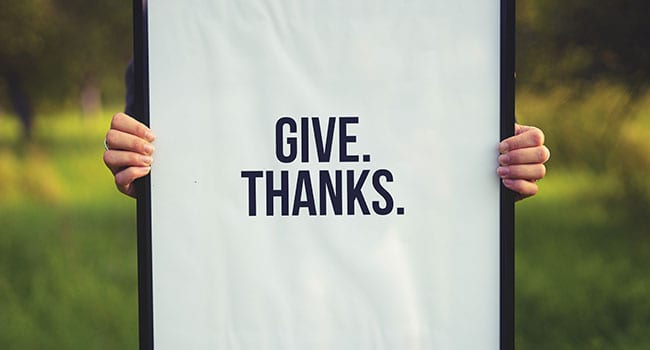 Showing gratitude is good for us, and yet gratitude does not come naturally or easily to most of us.
Showing gratitude is good for us, and yet gratitude does not come naturally or easily to most of us.
Our brains are “like Velcro for bad experiences, but Teflon for positive ones,” wrote neuropsychologist Rick Hanson and neurologist Richard Mendius. This tendency towards the negative makes it difficult for us to be grateful.
Research has shown positive links between gratitude and blood pressure, cholesterol levels and kidney function. Grateful people sleep better, exercise more frequently, and are happier and more altruistic than less grateful people.
Some ways to practise gratitude include keeping a gratitude journal, writing a letter of gratitude to someone (even if you never send the letter, the act makes you a more gracious person), and saying “thank you”. It can be helpful to have a daily cue that reminds you to count your blessings (it could be as simple as putting on your shoe). If you are a grump, paying attention to how frequently you complain can help you become more grateful. Reading inspirational literature, meditating, praying, reflecting on your day, and savouring the moment also help to make gratitude a habit.
Richard Emmons, a leading authority on gratitude, has written that gratitude heals, energizes and transforms lives. He compares gratitude to a stone structure. The foundation is joy, which he defines as the ability to see the good. The cornerstone is grace, the ability to absorb the good. The capstone is love, “paying it forward” or returning the goodness that one has received. All of life, he says, is an invitation to gratitude.
Because the brain tends toward the negative, it is natural for us to overlook life’s invitation to gratitude. We frequently operate from the philosophy that the grass is greener on the other side of the fence. We fail to recognize the good in the ordinary, and when things are going poorly, gratitude is the last thing on our mind.
It is easy to be grateful when life is humming along like a well-oiled machine. Gratitude does not prevent bad things from happening, nor is it a panacea to life’s challenges and problems. Fostering a disposition of gratitude helps us handle the disappointments, pain and suffering that is part of being human.
We gain perspective from choosing to be grateful. Gratitude helps us to see our life in its entirety, to put negative and painful experiences in context, and to find the silver lining in every cloud.
Materialism and ego get in the way of becoming a more grateful person. Consumerism feeds our restlessness and fuels our dissatisfaction. We become focused on what we do not have, instead of being grateful for the things we do have. Our ego fools us into thinking that we are entitled to more, and that we are the authors of our own good fortune. Gratitude, though, is always directed towards someone or something other than the self.
Emmons defines gratitude as “an affirmation of goodness. We affirm that there are good things in the world, gifts and benefits we’ve received” and “we recognize that the sources of this goodness are outside of ourselves”.
Every day is a natural time for us to give thanks for the good things in our life. To whom or what do we direct our thanks?
Louise McEwan has degrees in English and Theology. She has a background in education and faith formation.
Louise is a Troy Media Thought Leader. Why aren’t you?
The views, opinions and positions expressed by columnists and contributors are the author’s alone. They do not inherently or expressly reflect the views, opinions and/or positions of our publication.


